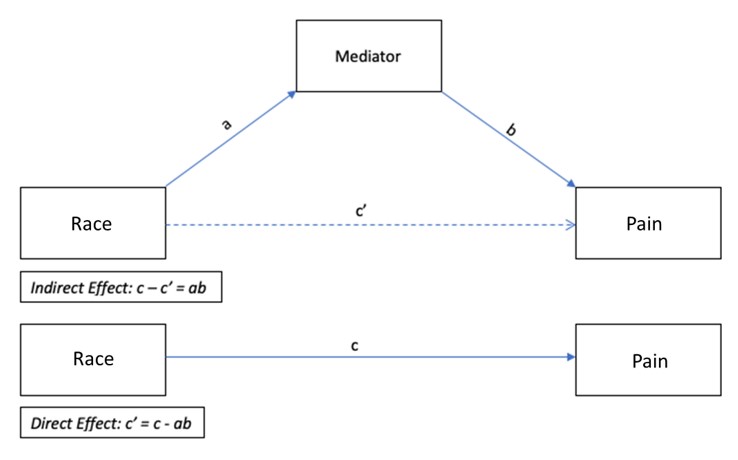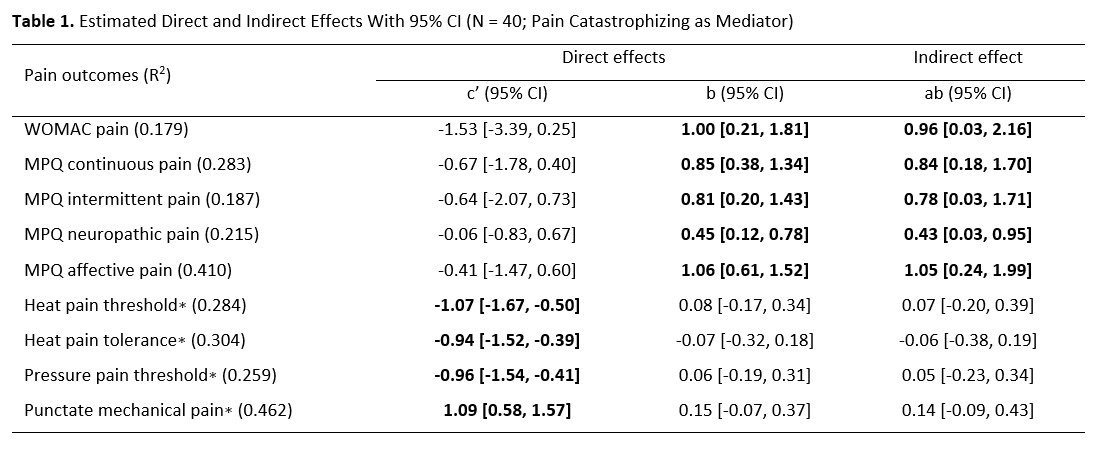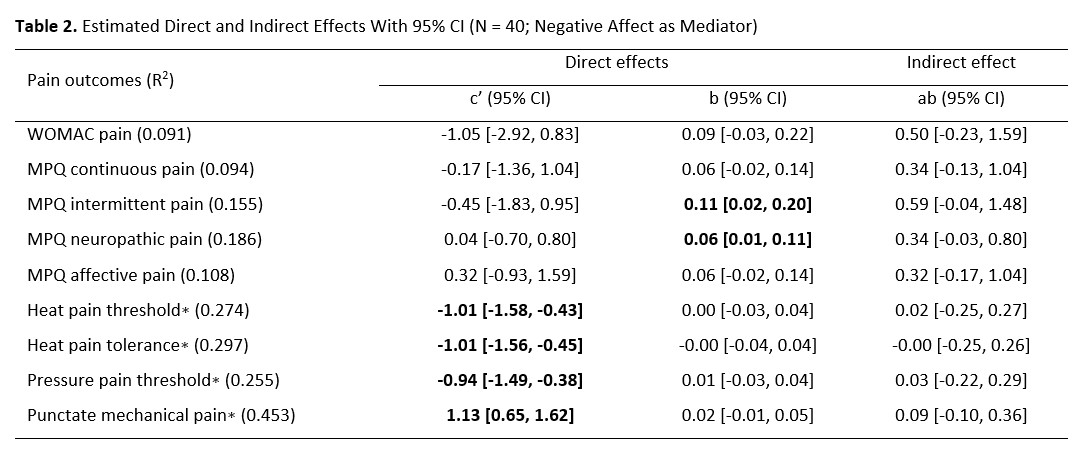Session Information
Session Type: Poster Session B
Session Time: 10:30AM-12:30PM
Background/Purpose: The prevalence of symptomatic knee osteoarthritis (OA) is projected to increase among racially and ethnically marginalized groups. Although recent studies have begun to delineate disparities in knee OA pain between non-Hispanic White (NHW) individuals and Asian Americans, a significant research gap persists in elucidating the mechanisms underlying these differences. The present study aimed to examine psychological factors, such as pain catastrophizing and negative affect, as potential explanatory mechanisms for the racial disparities in knee OA pain between NHW individuals and Asian Americans.
Methods: Forty community-dwelling participants between the ages of 50 and 70 with self-reported unilateral or bilateral knee OA pain based on the American College of Rheumatology criteria from North Central Florida were recruited into the study. The participants comprised 20 Asian individuals and 20 age- and sex-matched NHW individuals. The intensity of clinical knee pain was assessed using the Western Ontario and McMaster Universities Osteoarthritis Index (WOMAC) and the Short Form-McGill Pain Questionnaire-2 (SF MPQ-2). Quantitative sensory testing was carried out to measure experimental sensitivity to heat pain (i.e., threshold and tolerance), pressure pain threshold, and punctate mechanical pain. Pain catastrophizing was evaluated using the Coping Strategies Questionnaire-Revised Pain Catastrophizing subscale, while negative affect was assessed using the Positive and Negative Affect Schedule. Bayesian mediation analyses were conducted to examine both direct and indirect effects (mediation) between variables.
Results: Asian Americans had significantly higher pain catastrophizing and negative affect scores than NHW Americans. Race exhibited positive indirect effects through pain catastrophizing on WOMAC pain, MPQ continuous pain, MPQ intermittent pain, MPQ neuropathic pain, and MPQ affective pain, while having no direct effects on these pain scores. Such results suggest that the effects of race were likely fully mediated through pain catastrophizing scores for those measures: higher levels of pain catastrophizing in Asian Americans may contribute to their reporting higher levels of pain. However, no indirect effects of race on experimental pain through pain catastrophizing were observed. Furthermore, we found no indirect effects of race on all pain measures through negative affect.
Conclusion: Pain catastrophizing may be a crucial variable to consider in efforts to reduce racial disparities in knee OA pain. Structural/systematic factors that may contribute to greater self-reports of pain catastrophizing among Asian Americans should be further explored. The absence of indirect effects of race on experimental pain through pain catastrophizing highlights the need to explore other critical factors, such as genetic and biological influences. Additionally, while our preliminary findings may imply that more pain-specific variables, such as pain catastrophizing, should be prioritized in knee OA pain management over negative affect, further studies with larger sample sizes are necessary to confirm our findings.
Abbreviation: CI, Credibility Interval; MPQ, McGill Pain Questionnaire; WOMAC, Western Ontario and McMaster Universities Osteoarthritis
∗Average z-score.
Abbreviation: CI, Credibility Interval; MPQ, McGill Pain Questionnaire; WOMAC, Western Ontario and McMaster Universities Osteoarthritis
To cite this abstract in AMA style:
Lee C, Kwoh K, Ahn H. Mediating Role of Pain Catastrophizing in Racial Disparities in Knee Osteoarthritis Pain Among Non-Hispanic White and Asian Americans: A Pilot Study [abstract]. Arthritis Rheumatol. 2024; 76 (suppl 9). https://acrabstracts.org/abstract/mediating-role-of-pain-catastrophizing-in-racial-disparities-in-knee-osteoarthritis-pain-among-non-hispanic-white-and-asian-americans-a-pilot-study/. Accessed .« Back to ACR Convergence 2024
ACR Meeting Abstracts - https://acrabstracts.org/abstract/mediating-role-of-pain-catastrophizing-in-racial-disparities-in-knee-osteoarthritis-pain-among-non-hispanic-white-and-asian-americans-a-pilot-study/



